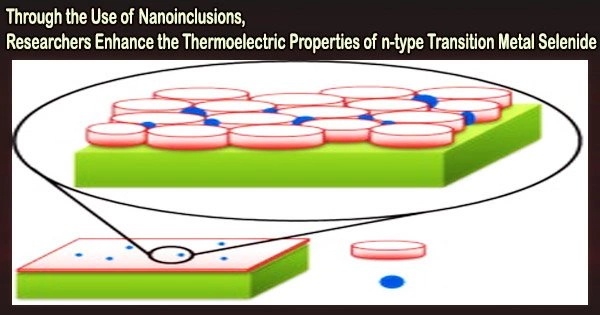Nanoinclusions refer to small particles or structures that are embedded or included within a material at the nanoscale. These inclusions can be of different types, such as nanoparticles, nanotubes, nanofibers, or even individual atoms or molecules. The size of nanoinclusions typically ranges from a few nanometers to several hundred nanometers.
A research team led by Prof. Qin Xiaoying from the Hefei Institutes of Physical Science of the Chinese Academy of Sciences has improved the thermoelectric performance of an n-type transition metal selenide, Bi2Te2.7Se0.3 (BTS), by incorporating MnSb2Se4 (MSS) nanoinclusions.
Results were published in two articles in the Chemical Engineering Journal.
Nanoinclusions can be intentionally introduced into materials for various purposes, including enhancing their properties or imparting new functionalities.
Thermoelectric technology has drawn a lot of interest as a potential remedy for energy issues. However, N-type bismuth telluride’s widespread commercial application is now constrained by its poor thermoelectric value ZT (figure of merit) and energy conversion efficiency.
The thermoelectric properties of materials can be improved by nanoengineering, however choosing a good second phase can be difficult.
It results in an 8% increase in power factor and a maximum ZTmax of 1.22 at 345K for the 1.5 wt% composite sample, which is an attempt of organic compound, and also for the later inorganic-organic compound system research to lay a certain foundation.
Chen Tao
In this investigation, the researchers discovered that adding MnSb2Se4 to BTS can produce outstanding outcomes.
Incorporated MSS nanoinclusions have been shown to have multiple benefits. It might simultaneously lower lattice thermal conductivity from enhanced phonon scattering by the dislocations and raise power factor as a result of better thermal performance brought on by the energy filtering effect.
The BTS/0.50wt%MSS composite sample demonstrated a maximum thermoelectric ZT of 1.23 at 345K, and an average ZT of 1.15 in the temperature range of 300–473K.
Notably, these figures indicated a roughly 48% and a 42% increase over the matrix BTS, respectively. The composite sample also displayed enhanced mechanical qualities, as shown by a 17% rise in Vickers hardness.
According to the findings, adding the MnSb2Se4 secondary phase to BTS can effectively boost its mechanical and thermoelectric capabilities.
In order to maximize the thermoelectric properties of thermoelectric materials at room temperature, researchers have achieved great progress. In 2022, they found that incorporating polyaniline nanoparticles into the BTS matrix could enhance phonon scattering and reduce the lattice thermal conductivity by 49% at 300K.
“It results in an 8% increase in power factor and a maximum ZTmax of 1.22 at 345K for the 1.5 wt% composite sample,” said Chen Tao, a member of the team, “which is an attempt of organic compound, and also for the later inorganic-organic compound system research to lay a certain foundation.”
















